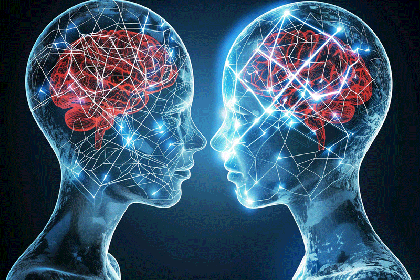Understanding Chemistry: The Science of Attraction
Feeling an instant connection with someone can feel extraordinary, but beneath that spark lies a fascinating interplay of biology, psychology, and unconscious signals that create the sense of being drawn towards another person.
Here is what the science of attraction reveals:
Scent and Subconscious Signals
Although the existence of pheromones in humans is debated, research suggests subtle scent signals can play a role in attraction, indicating genetic compatibility and influencing comfort or intrigue, often without conscious awareness.
The Role of Dopamine
The neurochemistry of love has been researched extensively, showing that when you are attracted to someone, your brain releases dopamine (the chemical associated with desire and pleasure). This leads to:
- A sense of focus and energy around them.
- A desire to spend more time together.
- Enhanced attraction when sharing new experiences that stimulate dopamine further.
Oxytocin and Emotional Closeness
Physical touch, eye contact, and affectionate gestures trigger the release of oxytocin, the ‘bonding hormone’ also involved in the neurochemistry of love, which:
- Increases trust and warmth.
- Promotes feelings of emotional security.
- Supports the transition from attraction to attachment.
Nonverbal Synchrony and Mirroring
Chemistry often feels like effortlessly connecting, which is supported by:
- Matching body language and vocal rhythms.
- Mirroring subtle expressions and movements.
- Developing an easy, natural flow in conversation.
These processes, driven by mirror neurons, help create a sense of safety and being understood during interactions.
Shared Values and Psychological Fit
Attraction is not just about physical chemistry but also about psychological alignment:
- Common interests and values create familiarity.
- Complementary traits bring balance to interactions.
- Emotional understanding deepens attraction.
This psychological connection often transforms the initial spark into a lasting bond.
Familiarity and Consistency
Attraction often builds through regular, positive interactions:
- Seeing someone frequently fosters comfort and familiarity.
- Small daily interactions strengthen a sense of connection.
Consistent, low-pressure time spent together allows chemistry to develop naturally.
The Power of Novelty
Engaging in new experiences together enhances attraction by raising arousal and dopamine levels:
- Exciting or emotionally engaging activities can heighten the sense of connection.
- Sharing new environments or challenges builds closeness.
While constant novelty is unnecessary, periodic shared experiences can strengthen the bond.
Bringing the Elements Together
Chemistry is not a single spark but the result of various interconnected factors:
- Dopamine drives desire.
- Oxytocin nurtures closeness.
- Mirror neurons support attunement.
- Psychological compatibility sustains interest.
- Familiarity and shared experiences allow attraction to grow.
While chemistry cannot be forced, you can create opportunities for it to flourish by:
- Being present and open in your interactions.
- Sharing new experiences with others.
- Creating an environment of emotional safety and trust.
- Showing up as your genuine self.
Final Thoughts
When you experience a spark with someone, it is your mind, body, and emotions aligning to signal a meaningful connection. By understanding the science behind chemistry, you can better recognise when a connection is worth exploring and nurturing into something lasting.



















